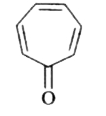Text Solution
AI Generated Solution
The correct Answer is:
|
Topper's Solved these Questions
HYDROCARBONS
CBSE COMPLEMENTARY MATERIAL|Exercise MATCH THE COLUMNS|2 VideosView PlaylistHYDROCARBONS
CBSE COMPLEMENTARY MATERIAL|Exercise ASSERTION - REASON TYPE QUESTION|8 VideosView PlaylistHYDROCARBONS
CBSE COMPLEMENTARY MATERIAL|Exercise FILL IN THE BLANKS|10 VideosView PlaylistEQUILIBRIUM
CBSE COMPLEMENTARY MATERIAL|Exercise UNIT TEST|6 VideosView PlaylistHYDROGEN
CBSE COMPLEMENTARY MATERIAL|Exercise Unit Test|11 VideosView Playlist
Similar Questions
Explore conceptually related problems
Knowledge Check
A
B
C
D
Submit
A
B
C
D
Submit
A
B
C
D
Submit
Similar Questions
Explore conceptually related problems
CBSE COMPLEMENTARY MATERIAL-HYDROCARBONS-TRUE AND FALSE TYPE QUESTION
- Alkanes mainly undergo substitution reactions using the free - radical...
Text Solution
|
Play - Arrange the following in the decreasing order of boiling points (i)...
05:23
|
Play - The acidic character of three types of hydrocarbons follows the order ...
03:46
|
Play - The peroxide effect is observed in case of HBr and not with HF, HCl or...
03:19
|
Play - Wurtz reaction is suitable of the preparation of both symmetrical and ...
01:30
|
Play - For a compound to be aromatic it must have (4n + 2) pi electrons.
01:10
|
Playing Now - Benzene has planar structure.
01:53
|
Play - The benzene molecule has two different carbon - carbon bond lengths, c...
02:47
|
Play - In Friedel - Crafts reaction, AlCl(3) is an electrophile.
02:22
|
Play - An electron - donating substituent in benzene ring gives a meta produc...
01:29
|
Play







